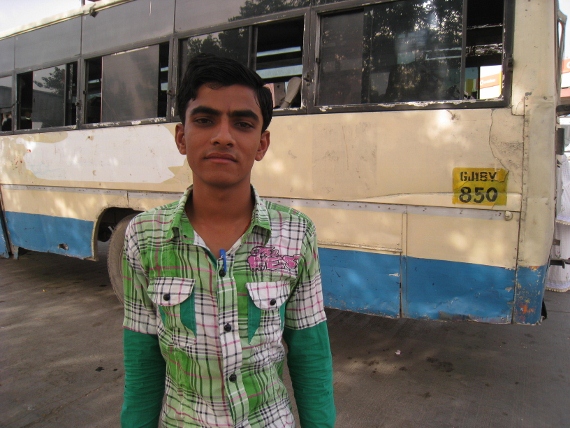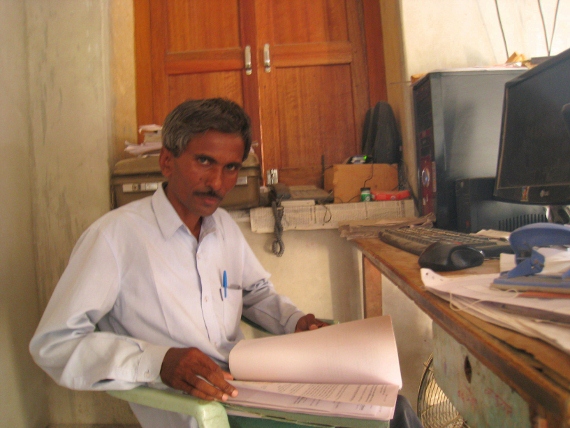The famous rat temple near Bikaner is just one of the several instances of a conservation practice common to Rajasthan
Orans are dedicated to one or more deities worshipped by the community and this ancient tradition of incorporating sacred with common benefits played a vital role in sustaining the pastoral culture and economy in the state. At Deshnoke, villagers are following the orders of Mata Karni Devi. Thousands of jhadberis (shrubs bearing berries) dot the area as cattle of the whole village graze freely. “The goddess had special affection for cows and this town was established by her. Nobody was allowed to till this land and it has since been preserved for grazing of livestock,” says Giriraj Singh Barath, the head of Karni Mata Trust, which manages the Oran. Hunting of animals, cutting of trees and even beating a bush to collect the berries are prohibited. Only wood for the purpose of cremation can be sourced from the Oran.
According to a legend, when some trees had to be cut for laying down a railway line through the Oran, the erstwhile ruler of Bikaner paid Rs 100 per tree into the temple account as compensation. As many as eight guards have been employed by the Trust to check any violation of this code of conduct. Since the Trust runs through donations at the temple, community participation is absolute. The sacred status of Orans also keeps it virtually free of encroachments. “The fear of divine repercussions is very strong. Also, the local community keeps a strong vigil and Oran is one biodiversity resource which is never neglected,” says Manohar Lal Sharma, who runs a tea stall near the temple.
With the town population growing to 30,000, a need to maximise the benefits from Oran has been felt. Around 500 hectare of area was enclosed two years ago and seeds of sevan grass were sown which is now ready for consumption of cattle. There is a plan to develop rest of the area on similar lines. A tubewell has also been set up to provide drinking water to cattle. During the annual fair of 'Navratras', thousands of pilgrims from far and wide visit the town and a parikarma of the whole 36 km perimeter of the Oran is undertaken. “It is believed that conducting this parikarma is equivalent to pilgrimage of Badrinath dham,” informs Barath.
Reverence over superstition
Unlike Deshnoke, the 100 hectare Oran at Hema village in Jaisalmer district is not managed by any organisation. Dedicated to goddess Jiya Desar, a small unpretentious temple sits on the embankment of a beautiful pond overlooking the whole expanse. Several native trees including ber, khejri and jhaal grow undisturbed as the locals feel cutting them invites wrath of the goddess. In the official records, the Oran at Hema village is classified as revenue wasteland and hence the administration allotted a piece of this land to a landless farmer a few years ago. However, the allottee gave an undertaking that he would like to donate this land in the name of the deity because cultivating it would have meant cutting of trees.
“One of the tales famous here is of a farmer who cut the trees here to make a plough 20 years ago. Soon, his family members started getting ill. He had to return the wood and seek mercy at the temple,” says Chattar Singh, who has been working with the local communities to revive traditional water harvesting methods. Though technologically-advanced would scoff at it as another tale of superstition, reverence more than fear makes the Orans in Rajasthan successful. And this reverence is not illogical. “In these sacred groves all over the State, you notice the abundance of native trees. These traditional species are worshipped all over Rajasthan since besides their various dietary benefits, they can withstand wild temperature extremes of the desert and hence are lifeline of the area,” says Jagdish Purohit of the Society for Promotion of Wastelands Development.
The most revered of these trees is Khejri (Prosopis cineraria), a frost-resistant, drought-resistant species which can withstand wild temperature extremes and arid conditions of the region. It is a nitrogen fixer, thus improving soil quality for other plants. With a taproot that can extend more than 100 feet deep and an extensive root mass, the tree also helps stabilise the sandy desert soil and shifting sand dunes. In addition, it generates highly nutritive fodder for the livestock while its bark, pods and leaves are also used to prepare traditional medicines. This is the reason why local communities still narrate the sacrifice made by Amrita Devi and over 350 others at Jalnadi village (now Khejarli) of Jodhpur. The year was 1730 when the Maharaja of Jodhpur wanted to build a new palace and required wood for it. When his men came to Jalnadi to fell Khejri trees, Amrita Devi rushed out and hugged the first tree. She was killed on the spot but her death motivated others to prevent the felling of trees. More than 350 lost their lives in a single day. When the king heard of this, he apologised and banned cutting of a Khejri tree.
That faith strengthens community is well known but its role in nature conservation gets more evident as one visits these Orans or Devbanis.
Paint it saffron
Driving down the hilly roads of Jharol block in Udaipur district, Rajasthan, chances are you will miss Upli Sigri. Surrounded by dense forest, it is a small village with 185 tribal families spread sporadically around the hills. This nondescript village, however, draws a lot of unwanted attention because of its rich teak wood forest spread over 60 hectare. A 10 feet log of teak can fetch maximum of Rs 1,200, a handsome amount for the locals who are mostly engaged in small scale farming and livestock rearing. This is why protection of forest is a big issue here and the one which has led to several conflicts.
“At one time, the forest was very dense but with increase in population and access to big markets in Udaipur and Ahmedabad, there was indiscriminate cutting of trees. Outsiders stripped the forest of its big trees with support from a few local villagers over the years. This also resulted in decline in fodder production and we were forced to spare our own farmlands to grow fodder grass or procure it from the market,” recalls a villager, Arjun Lal. Though the villagers tried to put up a united front against the cutting of trees, it always led to confrontations with outsiders. “In response to our opposition, residents of nearby Phalasia village banned our entry in their market, which is the only commercial centre of the area. We also had violent disputes with the residents of neighbouring Patia village,” informs Lal, who led a team of youngsters to stop felling of trees.
In 2002, when the villagers learned about the work being done by a non-profit organisation Foundation of Ecological Security (FES) in a neighbouring village, they saw a ray of hope. FES provided the technical support to villagers who approached the forest department for protection of the area under Joint Forest Management (JFM). Under JFM, village communities are entrusted with the protection and management of nearby forests. The areas concerned are usually degraded or deforested. A Village Forest Protection and Management Committee (VFPMC) was formed and the area was enclosed by a boundary wall. Entry of animals for open grazing was banned to ensure growth of saplings into trees. Villagers were allowed to cut the fodder by paying a nominal annual fee. Over the years, the forest regenerated itself due to complete ban on felling of trees, fresh plantations and water conservation through check dams and trenches. However, this improvement only led to the return of timber mafia.
Fearing the replay of past events, villagers started experimenting with various forms of protection.
“Firstly, rotational security system was implemented according to which all the families were involved in protection on turn basis. Popularly known as 'laathi system', a man goes to the forest with a laathi (stick) to check any intrusion. In the evening, he passes on the stick to the person who is meant to go the next day. However, there were a few families who were not willing to perform their duty and hence this arrangement had to be abandoned in favour of a forest guard,” explains Arvind Baghora, a resident of Upli Sigri. The payment of forest guard was decided to be in kind with each family giving him five pullas (a bundle weighing 2-3 kg) of fodder grass but this system also did not work. Finally, the payment was made in cash from the fee collected for cutting of fodder.
However, despite the deployment of a guard, the illegal cutting of trees went on covertly. Another round of deliberations followed and the senior residents of the village offered a solution everybody knew would resolve the problem once and for all. A special prayer was held at nearby temple of Kesariya jee, a local deity revered by all tribes of the region. The villagers vowed that they won't cut the trees for next five years and kesar (saffron) from the temple was then scattered in the forest area symbolising divine protection. “It is believed that if somebody cuts a tree after such a ceremony, he suffers an immediate loss,” Arjun Lal informs. Such has been the impact of this step that for last two years, there has been no tree felling in the area. The relationship of villagers with neighbours has also improved since there is no confrontation over the forest now.
The guard has been relieved of his services and open grazing has been allowed in the area. “The trees have grown so dense that sunlight is unable reach the ground resulting in reduction of fodder grass. This is why, we have allowed open grazing. After the passage of five years, we may allow cutting of trees for personal use like construction of house in the village. But this will only be done after proper assessment of a person's need by the VFPMC,” Bhagora says. For now, Upli Sigri has turned into a perfect example of environment protection in context of traditional and cultural norms instead of just going by a rulebook dictated by the state.
This story was first published on GOI Monitor



